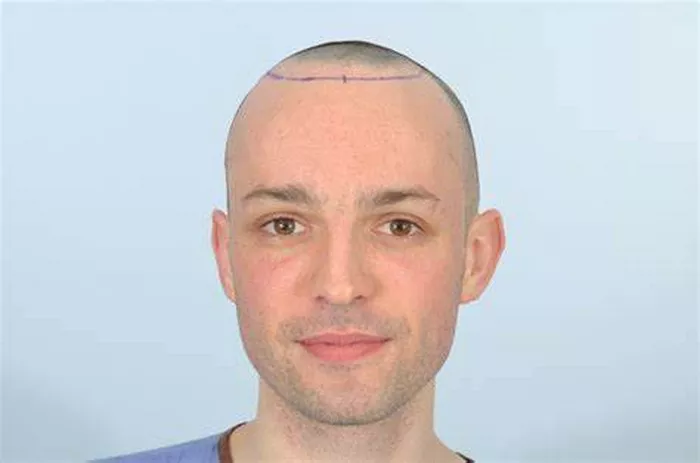Hair loss can be a distressing experience, impacting confidence and overall self-image. Many people turn to hair restoration solutions, with hair transplant surgery being one of the most effective and lasting methods. However, a common question that arises before undergoing the procedure is, “How does hair transplant look?” Understanding the visual journey—from the day of surgery to full growth—is essential for setting realistic expectations and ensuring satisfaction with the results.
What Is a Hair Transplant?
A hair transplant involves relocating hair follicles from a donor area, typically the back or sides of the scalp, to balding or thinning areas. This procedure uses natural hair, making it a permanent solution for hair loss. Two primary techniques dominate the field: Follicular Unit Transplantation (FUT) and Follicular Unit Extraction (FUE). Both aim to produce a natural look but differ in their methods of harvesting donor hair.
Immediate Appearance After Hair Transplant Surgery
Right after the hair transplant surgery, the scalp will show visible signs of the procedure. The recipient area will have tiny incisions or puncture wounds where the follicles were implanted. The donor site might show a linear scar (FUT) or multiple small dot scars (FUE), though the latter is typically less noticeable.
Swelling, redness, and some crust formation are common in the initial days. The transplanted area often looks somewhat unnatural at first due to scabbing and the visibility of the newly implanted grafts. This phase is temporary and a natural part of the healing process.
The Importance of Immediate Post-Op Care
Proper care following the transplant is critical to preserving the grafts and promoting healthy healing. Patients are usually advised on gentle washing techniques and avoiding direct trauma to the scalp. This phase, part of the broader hair transplant recovery, helps reduce swelling and scabbing, gradually improving the look of the transplanted scalp.
The Shedding Phase and Early Hair Growth
Approximately two to three weeks after the procedure, patients often notice that the transplanted hair starts to shed. This is a normal and expected phase called “shock loss.” Although it may seem alarming, the follicles themselves remain intact beneath the skin.
After the shedding phase, usually around three to four months post-surgery, new hair begins to grow. Initially, this hair is thin and fine but thickens over time. The gradual growth can feel slow, but patience is essential as the scalp rebuilds a fuller hairline and density.
Final Appearance: When Does a Hair Transplant Look Natural?
The most significant transformation happens between 8 and 12 months after the transplant. By this stage, most patients see substantial hair growth, with a natural hairline and improved scalp coverage. The transplanted hair matches the existing hair in texture and color, blending seamlessly.
Experienced surgeons design the hairline carefully to suit the patient’s facial features and age, ensuring that the results do not look artificial or overly dense. The key to a natural look lies in the angle, direction, and density of follicle placement, which expert surgeons meticulously plan.
Common Questions About Appearance Post-Transplant
- Will the transplant be noticeable? In the long term, no. While initial healing signs are visible, mature transplanted hair looks and feels natural.
- Is the hair permanent? Yes, transplanted hair follicles are usually resistant to hair loss and remain for life.
- Will I have scars? FUT leaves a linear scar, usually hidden by surrounding hair. FUE results in tiny dot scars that are barely noticeable.
How Hair Transplant Cost Impacts Expectations
Understanding hair transplant cost is essential before deciding on the procedure. Cost varies depending on the technique, the number of grafts required, clinic location, and surgeon expertise. While it might be tempting to choose a lower-cost option, quality and natural-looking results should be the priority.
Investing in a reputable clinic and experienced surgeon increases the chances of achieving a natural, aesthetically pleasing result that justifies the expense. The cost also often includes post-operative care and follow-up visits, which are critical for ensuring the best possible outcome.
Real-Life Transformations: Hair Transplant Before and After
Looking at hair transplant before and after photos is one of the best ways to understand how the procedure looks over time. These images demonstrate the progression from surgery to full growth, helping manage expectations and provide inspiration.
Before photos usually show thinning or balding areas, while after photos highlight restored hairlines and increased density. These comparisons reveal how hair transplants can dramatically improve appearance and confidence when performed well.
Conclusion
So, how does hair transplant look? Initially, the scalp shows signs of surgery, with redness, swelling, and crusts, which are all temporary. After a shedding phase, new hair growth gradually appears, becoming thicker and denser over several months. Within a year, the transplanted hair blends naturally with existing hair, creating a permanent, undetectable restoration.
Understanding the visual timeline and managing expectations is crucial for anyone considering this transformative procedure. Coupled with appropriate care and choosing a skilled surgeon, a hair transplant can restore not just hair but also confidence and quality of life.
Related Topics:
- 5 Scalp Health Treatments That Can Halt Hair Fall Effectively
- Understanding Hair Transplant: What Is It For?
- How Much Is 5000 Grafts in Turkey? A Complete Guide


